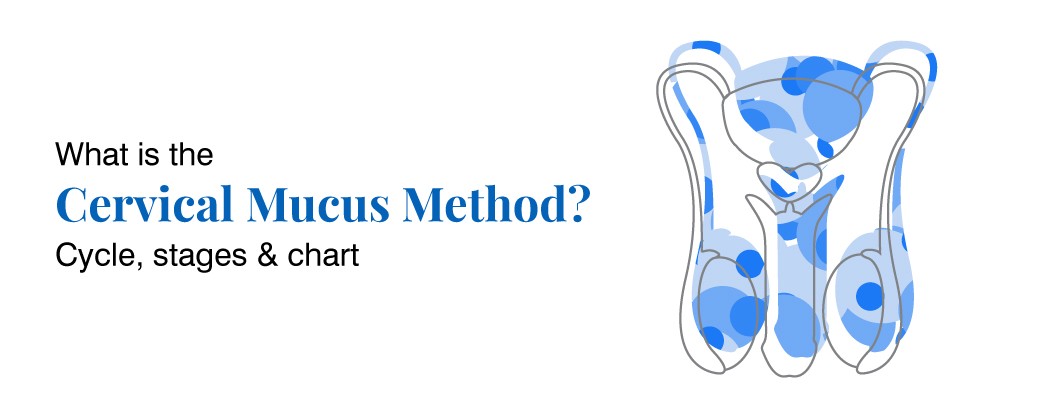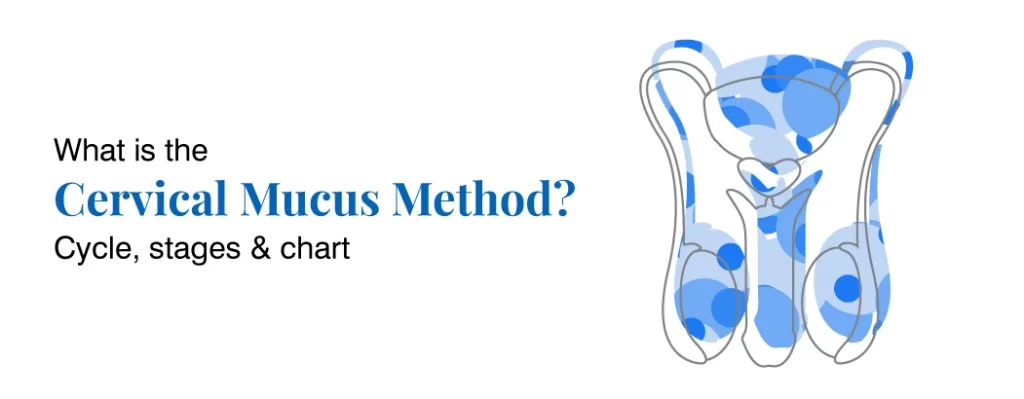
What is cervical mucus?
Cervical mucus, also called cervical fluid or vaginal discharge, is a natural secretion from the cervix that connects the uterus and vagina. It plays a vital role in female fertility and menstrual cycles, changing consistency and volume due to hormonal changes. Understanding these changes helps with fertility tracking and reproductive health management.
What is fertile discharge?
Fertile discharge, also called fertile cervical mucus, is a type of cervical mucus that indicates increased fertility. It appears clear, slippery and stretchy, like raw egg whites. This mucus helps sperm reach and fertilize an egg, making it crucial for conception. Tracking fertile flow helps those trying to conceive identify their most fertile days in the menstrual cycle.
Importance of ovulation tracking
Monitoring ovulation is essential for several reasons:
Fertility and conception: For couples trying to conceive, identifying ovulation helps ensure they have sex during the most fertile window, increasing the chances of pregnancy.
Birth control: For those using natural family planning methods, understanding when ovulation occurs can help avoid pregnancy without hormonal birth control.
Health monitoring: Irregular or absent ovulation can be a sign of underlying health problems such as polycystic ovary syndrome (PCOS) or thyroid disorders, so ovulation tracking can help in detection and treatment early.
Ovulation tracking offers numerous benefits related to fertility, reproductive health, family planning, and empowering people to make informed decisions about their bodies and reproductive goals.
Features of fertile ovulation discharge
The fertile secretion of ovulation, known as cervical mucus, changes during the menstrual cycle due to hormones. These changes indicate fertility, with characteristics such as clear, stretchy, increased mucus during ovulation. Monitoring it helps track fertility and reproductive health.
Changes in coherence
Before ovulation: In the days before ovulation, cervical mucus usually goes from dry or sticky to moister, creamier, or lotion-like. This change in consistency is due to increased estrogen levels, which make the mucus more conducive to sperm survival and transport.
Ovulation: At the peak of fertility, during ovulation, cervical mucus becomes clear, slippery, and stretchy. It often resembles the consistency of raw egg whites. This type of mucus is fertile cervical mucus and is the most favorable for sperm movement.
Color
Before ovulation: The color of cervical mucus varies, but is usually white or off-white before ovulation.
Ovulation: During ovulation, mucus becomes clearer and more transparent. It may also have a slightly shiny or shiny appearance.
Stretching
Pre-ovulation: Cervical mucus before ovulation is generally not very elastic and can break when stretched between the fingers.
Ovulation: Fertile cervical mucus is very elastic. When you try to stretch it between your fingers, it forms a rope-like structure that can stretch several centimeters without breaking. This elasticity helps transport sperm through the cervix to the uterus.
Amount
Before ovulation: Before ovulation, the amount of cervical mucus is usually minimal and some women may not notice much discharge.
Ovulation: During the fertile window around ovulation, cervical mucus production increases significantly. Some women may experience a noticeable increase in flow during this time.
Slippery feeling
Ovulation: Fertile cervical mucus has a slippery or wet feeling when touched. It often feels like mucus facilitates lubrication in the vaginal area.
No odor or itching
Ovulation: Healthy cervical mucus, including fertile mucus, should not have a strong odor or be itchy. If you notice an unusual odor or experience itching, it may indicate an infection or other health problem, and you should seek medical attention.
Moment
Pre-ovulation: Changes in cervical mucus begin shortly after menstruation and continue until just before ovulation. The consistency and quantity gradually increase as you approach the fertile window.
Ovulation: Fertile cervical mucus is usually present for a few days around ovulation, often peaking on the day of ovulation. After ovulation, you return to a less fertile and drier state.
How to track fertile ovulation discharge
To track your fertile ovulation flow, observe your vaginal discharge daily and note its color, consistency, and texture. As ovulation approaches, the fertile discharge becomes moist, creamy, and clear, like egg white. You can also check its elasticity with the stretch test. Keep track of these observations in a fertility chart or journal to identify patterns and predict fertile windows.
Some use ovulation predictor kits (OPK) along with cervical mucus tracking for greater accuracy. Although it takes practice, monitoring cervical mucus allows you to make informed decisions about your reproductive health, whether you are trying to conceive or prevent pregnancy.
Factors affecting fertile ovulation discharge
Among the various factors that influence the flow of fertile ovulation, it is essential to recognize that cervical mucus is a dynamic substance. Its consistency, color and volume can change throughout a woman’s menstrual cycle due to hormonal fluctuations and other factors. These are the key considerations that can affect the characteristics of the fertile ovulation flow:
Hormonal changes affect cervical mucus.
Age affects the quality of cervical mucus.
Medications can change the consistency of cervical mucus.
Infections or STIs can alter cervical mucus.
Staying hydrated ensures better cervical mucus.
Health conditions such as polycystic ovary syndrome affect cervical mucus.
Lifestyle factors, such as smoking and stress, can affect cervical mucus.
External factors such as lubricants can interfere with cervical mucus.
Semen may resemble fertile cervical mucus after intercourse.
Surgical procedures involving the cervix can affect cervical mucus.
Understanding these factors can help people accurately interpret changes in cervical mucus, whether they are trying to conceive or simply monitoring their reproductive health.

